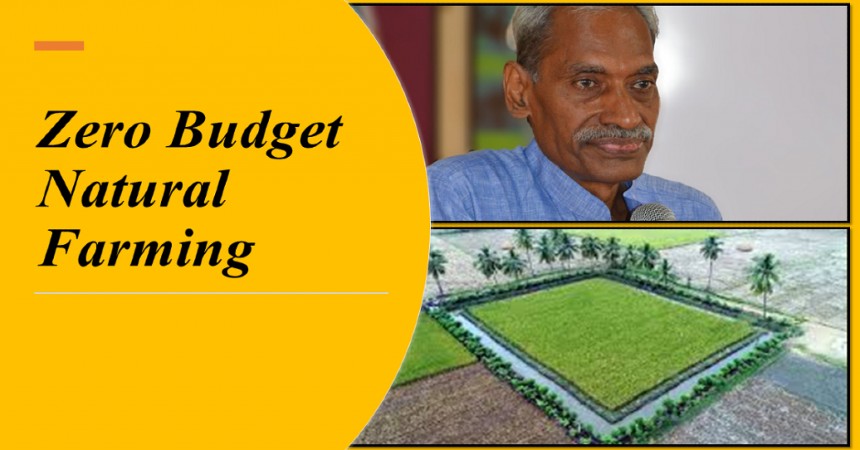India is one of the top nations in development and cultivating. Indian farmers are the supporters of our country’s economy as the Indian economy is fundamentally a farming-based nation.
Over 40 years prior, a Japanese farmer overturned traditional speculation on agribusiness with his way breaking book, The One-Straw Revolution. In the book distributed in 1975, Masanobu Fukuoka supported an arrival to characteristic cultivating, that is, applying the laws of nature to horticultural practices.
In India, farmers had drilled characteristic cultivating for long till the Green Revolution bulldozed their conventional practices and constrained them to receive the cutting-edge arrangement of significant expense substance sources of info and half-breed seeds.
In India, Zero budget natural farming is one such technique for the horticulture area to come back to characteristic cultivating.
The legislature of India has been advancing natural cultivation in the nation through the committed plans of Paramparagat Krishi Vikas Yojana since 2015-16 and through Rashtriya Krishi Vikas Yojana.
What is Zero Budget Natural Farming?
Zero Budget Natural Farming is a lot of cultivating strategies, and grassroots worker development, which has spread to different states in India. It is a cultivating practice for the normal development of yields without including substance composts.
According to the word Zero Budget to the zero-net expense of the creation of all yields required. It promises to decrease farming expenditure. It encourages the use of local seeds and natural fertilizers.
It is a technique that uses biological pesticides instead of chemical-based fertilizers. Farmers could use earthworms, cow dung, urine, plants, human excreta, and such biological fertilizers for crop protection.
It reduces farmers’ investment and protects the soil from degradation.
Who Started Zero Budget Natural Farming in India?
When the Green Revolution began to destroy lands and livelihoods, some farmers began their search for a return to alternative systems.
One of them was Subhash Palekar of Vidarbha, who had practiced chemical farming but after several experiments, He met Fukuoka when the Japanese philosopher visited India.
They took the initiative together for that technique of natural farming. They promoted it widely across Karnataka as zero budget natural farming
Four Pillars of Zero Budget Natural Farming–
- Jeevamrutha–
It is a mixture of fresh cow dung and aged cow urine both from India’s indigenous cow breed, jaggery, pulse flour, water, and soil. This mixture is to be applied to farmland. This is one type of natural fertilizer.
- Bijamrita–
It is a mixture of neem leaves pulp, tobacco, and green chilies prepared for insect and pest control. It can be used to treat seeds. Seeds get naturally protected with this treatment.
- Acchadana (Mulching)-
This method helps to protect the top cover of soil during cultivation and does not destroy it by tilling. This method helps to maintain soil moisture content.
- Whapasa–
Whapasa means the condition where the presence of both air molecules and water molecules in the soil. It could help to reduce the extra irrigation requirements.
Benefits of Zero Budget Natural Farming-
Zero budget natural farming reduces farmers’ initial cost. Automatically farmer’s incomes increase. Soil ecosystem also gets improved. Locally available cow dung is full of nutrient value, which adds soil value.
Bacteria present in cow dung helps to decompose the organic matter in soil and make the soil ready for plants.
In zero budget natural farming required less water and electricity as compared to chemical farming.
Zero budget natural farming improves soil productivity. This technique reduces the risk of disease attack on the crop. Agriculture Produce quality also gets improved because of less chemical fertilizer use.
Disadvantages of Zero Budget Natural farming-
The main disadvantage of this method is due to the misunderstanding among farmers who go by the word. While the method is natural, it does incur a minimum input cost.
The cost is in the indirect form of labor for fieldwork and cattle rearing, the input requirement for cattle feed, and its health requirements like vaccinations. Zero budget implies that no direct cost is incurred but there are indirect costs in terms of feed to the cattle, labor and so on which are kept at very minimal cost.
Further, we should not forget that ecological changes cannot be done instantaneously. Zero Budget Natural Farming might be profitable in the long run, but as of now, completely depending on it for profit is not feasible. The best option is to combine chemical farming and organic farming.
Conclusion– In this way Zero budget natural farming has its own advantages and disadvantages for Indian farmers. It is a great farming technique for Indian marginal farmers for farming at low cost with high productivity. For detailed information about agriculture, check out Khetigaadi.
Visit our page for more information about Tractor, Agricultural implements, Harvesters, Tractor Price, Tractor Videos, and Tractor Games.



